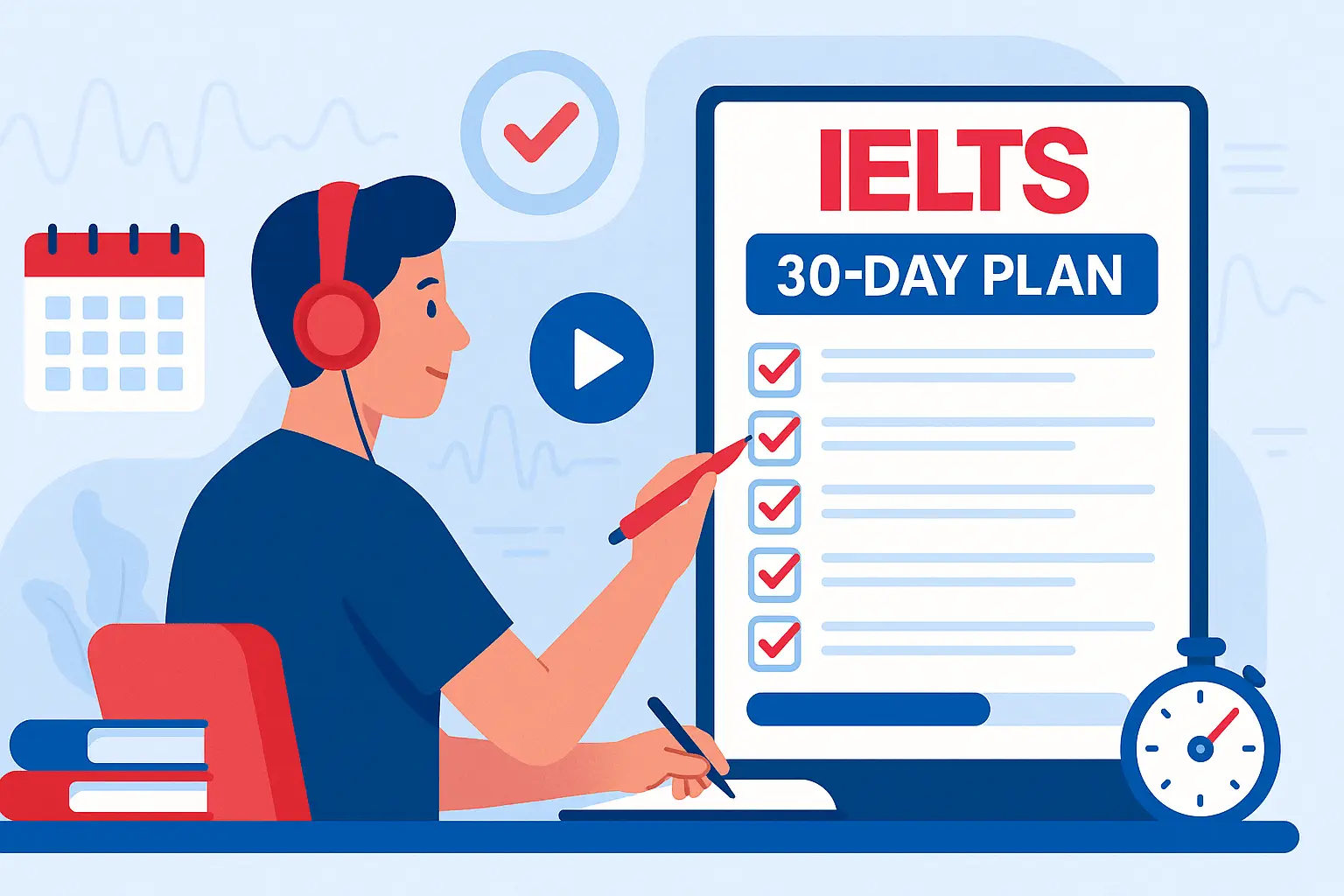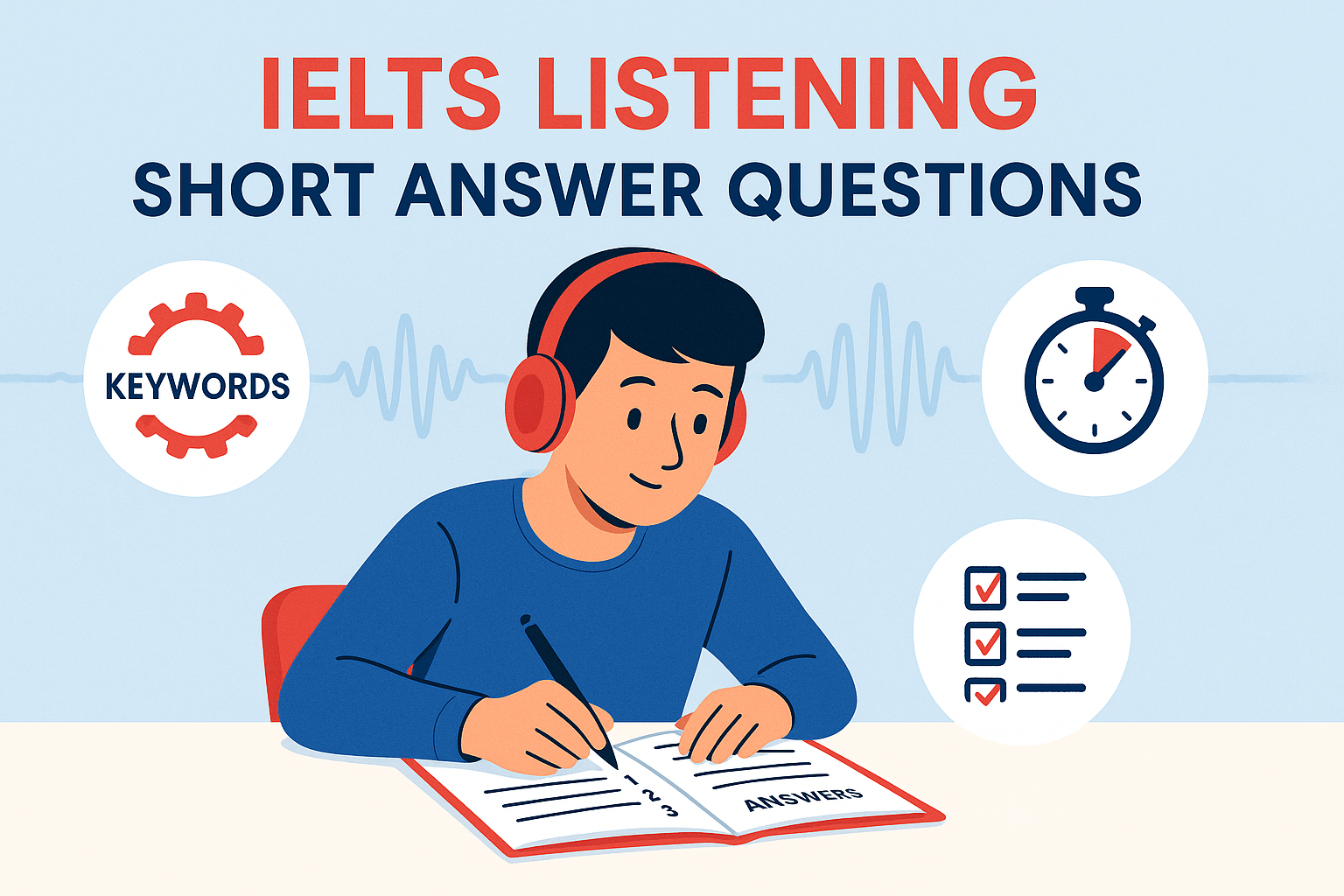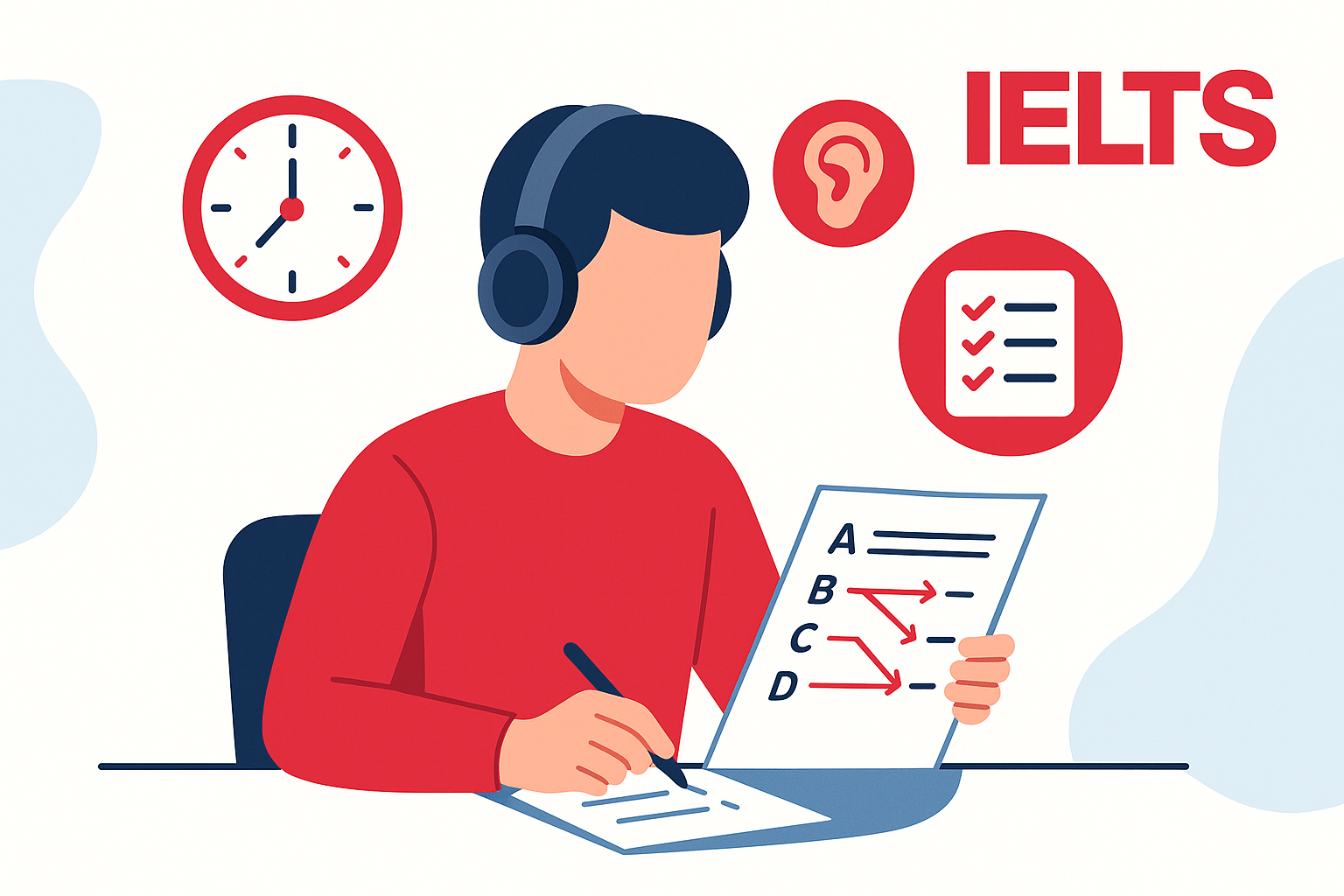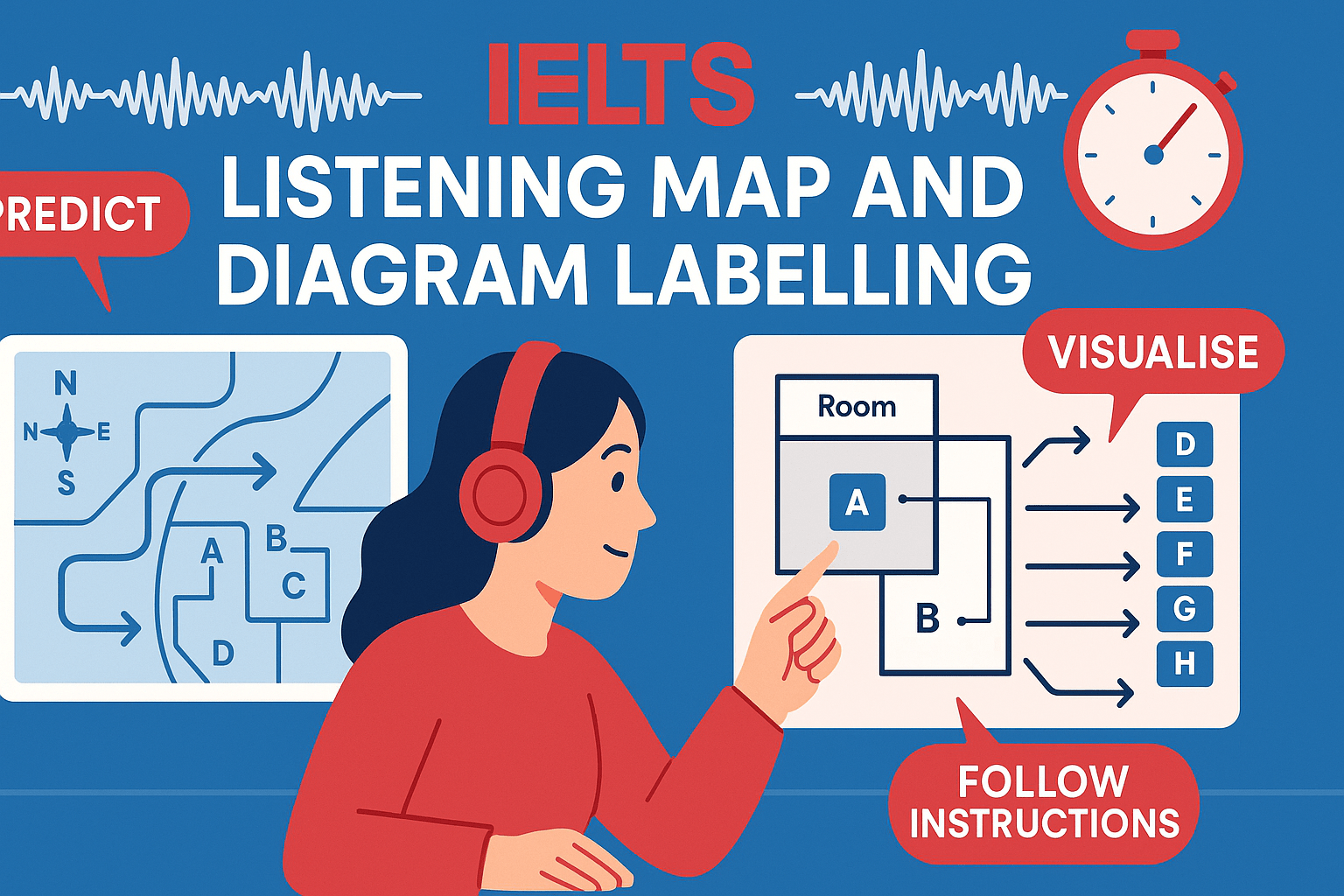As an international IELTS teacher working with learners from more than 40 countries, one issue I hear every week is this:
“I keep practicing IELTS Listening tests, but my score stays the same!”
That’s because repetition without reflection leads to stagnation.
To truly improve, you need a structured, consistent IELTS Listening daily practice plan — not just random test-taking.
This blog shares my proven 30-day practice routine that has helped hundreds of my students move from Band 5.5–6 to Band 7.5+ in Listening — and you can follow it step by step, no matter where you’re starting.
Why You Need a Daily Listening Routine
Most students I’ve worked with rely too heavily on full mock tests or Cambridge practice books. While those are excellent for exam-day preparation, they don’t build your listening muscle daily.
IELTS Listening demands:
- Fast comprehension of British, Australian, and other accents
- Understanding paraphrased meanings
- Predicting answers before they’re spoken
- Tracking keywords and synonyms across sections
If you’re not practicing these micro-skills daily, progress will be painfully slow.
My 30-Day IELTS Listening Daily Practice Plan (What’s Inside)
Each day of this plan targets a core listening skill or test strategy and includes both input (listening material) and active output (notetaking, answering, reflection).
Here’s how I structure it:
Week 1: Build Core Listening Awareness
Focus: Accents, sentence stress, general understanding
- Day 1–2: Listen to BBC Learning English or IELTS-related YouTube interviews. No note-taking — just listen for understanding and accent exposure.
- Day 3–4: Practice with Section 1 from real IELTS Listening tests. Use the IELTS Listening Practice Tests to get started.
- Day 5: Review mistakes and transcript. Identify why you missed answers — spelling, speed, or distraction?
- Day 6–7: Learn 10–15 words from the IELTS Listening Vocabulary List and try shadowing the pronunciation.
Week 2: Predict and Paraphrase
Focus: Pre-listening prediction, distractor awareness
- Day 8–9: Before each listening, look at the questions and predict the answers. What word type is needed?
- Day 10: Listen to Section 2 map/diagram completion. Mark directions while listening.
- Day 11–12: Focus on multiple-choice questions. Use strategies in our IELTS Listening Band 7–9 Guide to avoid common traps.
- Day 13–14: Keep a mini dictionary of paraphrases. For example, if the audio says “venue,” the question might say “location.”
Week 3: Boost Speed and Accuracy
Focus: Fluency under pressure, high-speed notetaking
- Day 15–17: Practice full Sections 3 and 4 (longer and more academic). Focus on speed.
- Day 18–19: Check transcripts word-by-word and compare what you heard vs. missed.
- Day 20: Try listening to a TED Talk with subtitles, then remove them. Shadow the speaker for a few minutes.
- Day 21: Take a full mock listening test under timed conditions using British Council’s practice resources.
Week 4: Test Simulation and Fine-Tuning
Focus: Endurance, error correction, time management
- Day 22–24: Alternate between Section 1–4 with different question types daily.
- Day 25–26: Take two full-length practice tests and review in detail. Use high-quality sources like ielts.org or IELTS IDP.
- Day 27–28: Review past mistakes. Track recurring errors (spelling, numbers, left-right confusion, etc.)
- Day 29: Take a mock test using real answer sheets and headphones — simulate real test conditions.
- Day 30: Final reflection. What improved the most? What still needs work?
Real Problems, Real Solutions (From My Students)
Here are a few common issues my students faced — and how this routine fixed them:
🔹 Problem: “I don’t understand Australian accents at all!”
Fix: Week 1 includes accent exposure via podcasts and real conversations, helping your ears adapt.
🔹 Problem: “I always miss the spelling of short answers.”
Fix: Week 2 builds a paraphrase bank and spelling list based on repeated test mistakes.
🔹 Problem: “I panic during MCQs and guess.”
Fix: Week 2 and 3 train prediction and trap-spotting. You’ll learn to slow down mentally while speeding up physically.
Where to Go Next After 30 Days
If you follow this 30-day IELTS Listening daily practice plan exactly as designed, you’ll build:
- Faster response times
- Stronger accuracy
- Better understanding of distractors
- More confidence in every section
Many of my students improved by 1–1.5 bands in a single month using this structure — especially when combining it with a recognized IELTS preparation course.
Still need support with vocabulary, test format, or advanced strategies? Explore:
- IELTS Listening Vocabulary Practice Guide
- IELTS Listening Band 7–9 Guide
- IELTS Listening Practice Tests
FAQs About IELTS Listening Daily Practice
Q1: How long should I practice IELTS Listening every day?
A: Around 30–45 minutes is ideal. Consistency matters more than duration.
Q2: Can I skip weekends and still improve?
A: Yes, but adjust your 30-day routine into a 6-week plan instead of 4.
Q3: Should I always use full tests?
A: Not at all. Daily focused practice on Sections and question types is more effective than repeated mock tests.
Q4: What if I’m already at Band 7?
A: Focus on perfection. Your daily plan should target MCQ trap analysis, fluency shadowing, and error-free spelling.
Q5: Is this 30-day plan suitable for General Training test-takers?
A: Absolutely. Listening is the same in both Academic and General IELTS.
Let this 30-day plan guide your journey, and you’ll never feel lost again in IELTS Listening.
Stay consistent, stay curious — and watch your band score climb.
Ready to begin? ✅
Start Day 1 today, and come back to me in 30 days with your success story.




